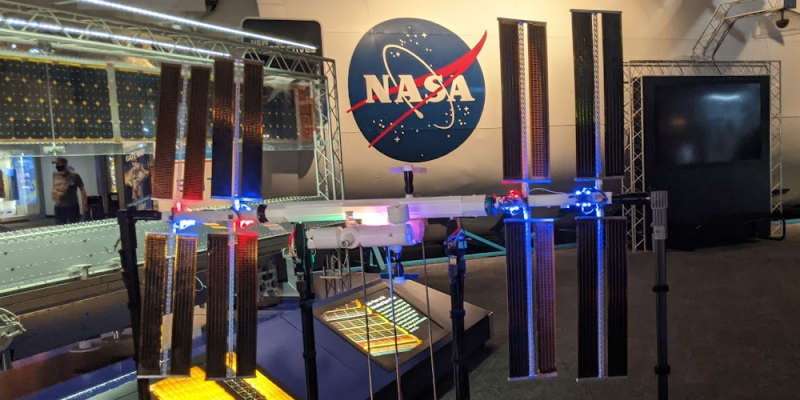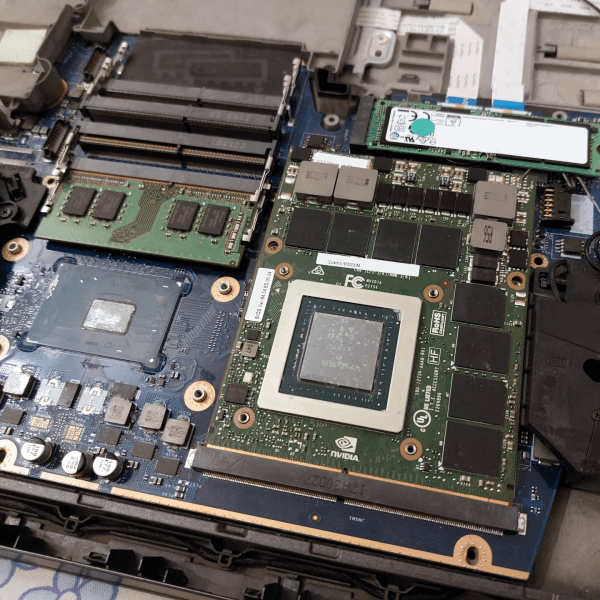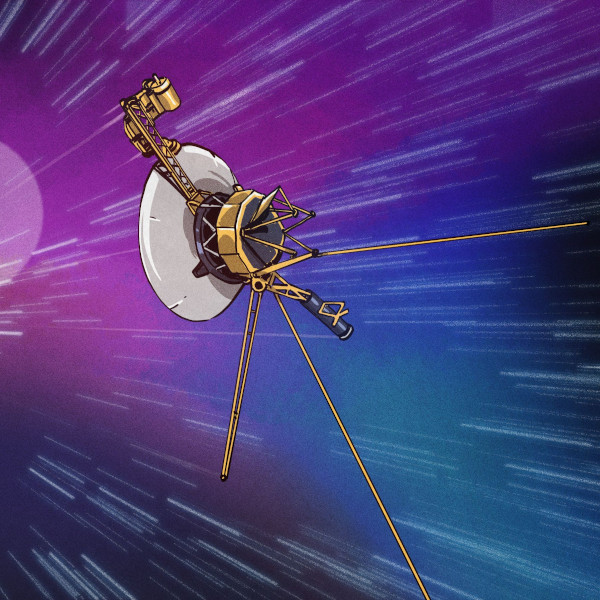It’s not an overstatement to say that the International Space Station (ISS for short) is an amazing feat of engineering, especially considering that it has been going for over two decades. The international collaboration isn’t just for the governments, either, as many images, collected data and even some telemetry have been made available to the public. This telemetry inspired [Bryan Murphy] and his team to create the ISS MIMIC, a 1:100 scale model of the ISS that reflects its space counterpart.
The model, covered by [3D Printing Nerd] after the break, receives telemetry from the real ISS and actually reflects the orientation of the solar panels accordingly! It also uses this entirely public information to show other things like battery charge level, power production, position above the earth and more on a display. An extra detail we appreciated is the LEDs near the solar panels, which are red, blue or white to indicate using battery, charging battery and full battery respectively. The ISS orbits the earth once every 90 minutes, which can be seen by the LEDs changing color as the ISS enters the shadow of the earth, or exits it.
What could you do to make this better you might ask? Make the it open-source of course! The ISS MIMIC is fully open-source and uses common tools like 3D printing with PLA, Raspberry Pis and Arduinos to make it as accessible as possible for education (and hackers). Naturally, the goal of this project is to educate, which is why it’s open-source and aims to teach programming, electronics, mechatronics and problem solving.
Video after the break.
This project brings the space station to a Raspberry Pi, but what about flipping the tables and bringing the Raspberry Pi to the space station?

















What a fantastic project!
That’s huge! I would love to have miniature version of this. Wonder how small it can get while still full articulated.
“It’s not an overstatement to say that the International Space Station (ISS for short) is an amazing feat of engineering, especially considering that it has been going for over two decades. The international collaboration isn’t just for the governments, either, as many images, collected data and even some telemetry have been made available to the public. ”
Not wrong, though I found MIR to be more interesting, partly because it surpassed itself. It also saw international guests, which seems to be forgotten these days. ISS is neat, no question, but it’s core was meant to become MIR 2. So there’s a relationship. Also, MIR was the status symbol of USSR, which makes for an even higher symbolic value here, in terms of internal cooperation and peace. The fact that former enemies lived on board and mastered all the trouble that comes with it. They literally were helping others what was aking to a sinking boat (MIR was in a desolate condition near its end; it really had need for an overhaul).
The Apollo-Soyuz and Shuttle-Mir missions provided a lot of knowledge and data needed to help execute the design and construction of ISS. Which were amazing accomplishments to successfully pull off at the time.
+1 STS/MIR missions also paved the road for amateur radio in space. I kind of miss the days, when ordinary people had a little chat with the astronauts. Or when MIR cosmonauts had sent earth pictures from inside the cabin via Robot-36 (SSTV).On ISS, it’s primarily PR/school activities these days. Ah, well. *sigh*
I don’t know exactly how large the model is but I nice tough would be putting a large monitor behind it showing it’s position over the earth as seen from an ISS window.